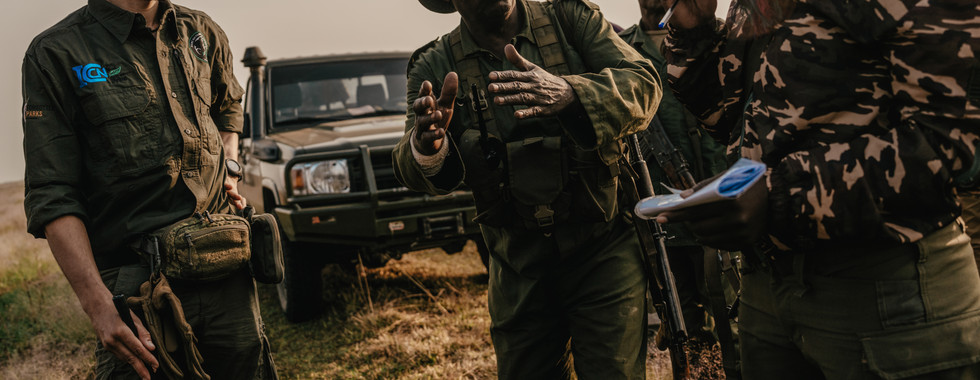
Remaining cautious and grazing away from humans have been the main survival technique for the estimated 200+ zebras of the Upemba National Park. From a small group of individuals, their population has multiplied, enjoying a safe habitat in the northern sector of the park. As the last remaining wild zebras in the DRC, understanding their behavior and mitigating the different threats they face is a priority for the park’s management and its partners, hence it was crucial to place collars on some of them for long-term monitoring.
Renowned photojournalist Hugh Cunningham was part of the operation and captured some stunning visuals with the following narration:
“After rangers scouting on motorbikes located the herds, the collaring had to take place from the back of a jeep. Speeding to within meters of the animals, they were darted with tranquillizers and had GPS transmitters installed on their necks.
With these photos, I did not want to shy away from dust, chaos and a few splashes of blood on fur, but important to say the process was handled by an expert vet, with full attention to the stress of the animals. They are cooled with water through the process, given a health check and left with antibiotics in the dart puncture site. The sedative is reversed as quickly as possible, and the zebras spring away. Their new collars will send back location information for study; a little modern intervention into Congo’s last remaining savannah wilderness.”
A total of height zebras from different herds received GPS collars that will allow monitoring and inform efforts for their preservation. Elephants of Upemba, which are also the last remaining pure savanna elephants of the DRC, will be collared in the following months to facilitate their monitoring, and above all, mitigate the various cases of human-elephant conflicts. As a reminder, elephants, zebras and buffalos constitute the main targets of conservation at Upemba, and so far, the results produced give more reasons to remain hopeful and believe in the renaissance of the Upemba National Park as a biodiversity hotspot in the DRC, Africa and the world.
Enjoy the images!
Photos: Hugh Kinsella Cunningham | Story: Communication-UNP | All Rights Reserved

























Comentarios